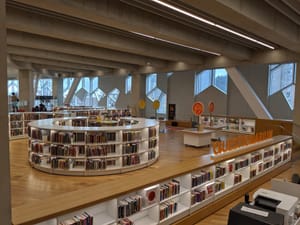The (admirably brief!) Macquarie University Library strategic plan states:
Over the next three years we will be designing and implementing a new technical architecture to underpin all our activities. In this new electronic environment we aim to become “invisible” – by making our services and resources available in a seamless fashion within research, teaching and learning workflows. [pdf]
This is a significant ambition. It aligns with ongoing discussion elsewhere about reaching out into research and learning behaviors (see discussion at the recent CIC Library conference for example).
The library wants to match its ambition to the University’s. The library mission is to ‘provide information services and resources that will enable Macquarie to be among the top eight research universities in Australia and the top 200 in the world‘. The University aims to achieve these goals by 2014 when the University is fifty years old [pdf].
Echoing one of ‘true success’ factors suggested in the NYU report I mentioned the other day, they aim to communicate the ‘value of the Library in attracting staff and students to the University’. I was also interested to read that the library would improve the image of the University by “showcasing University research, cultural collections and unique library resources”. The objective is interesting itself, but so is the way in which research outputs and special collections are collocated. It brings together the (typically new) unique research outputs of the university and the (often old) unique materials assembled in the library. I think that the correspondences between the various repository initiatives in libraries – for research and learning materials and for cultural materials – will be of growing interest, alongside the introduction of viable approaches to digital asset management across this range.
I thought that this library document stated with interesting clarity the goals of the library:
- To improve research performance at Macquarie by: …
- To improve teaching at Macquarie by: …
- To improve the image of the University by: …
- To improve management efficiency and effectiveness by: …
One of the ways in which the last goal will be achieved is by “evaluating and benchmarking the Library’s activities”. It would be interesting to know what sort of metrics one would use to evaluate achievement of some of these goals. One wants the value the library creates to be visible, while a larger part of its services become invisible.
I went to look at these documents after hearing Maxine Brodie and Meredith Martinelli talk about organizational and strategy development at Macquarie at the recent conference The academic librarian: dinosaur or phoenix.
Related entries:



